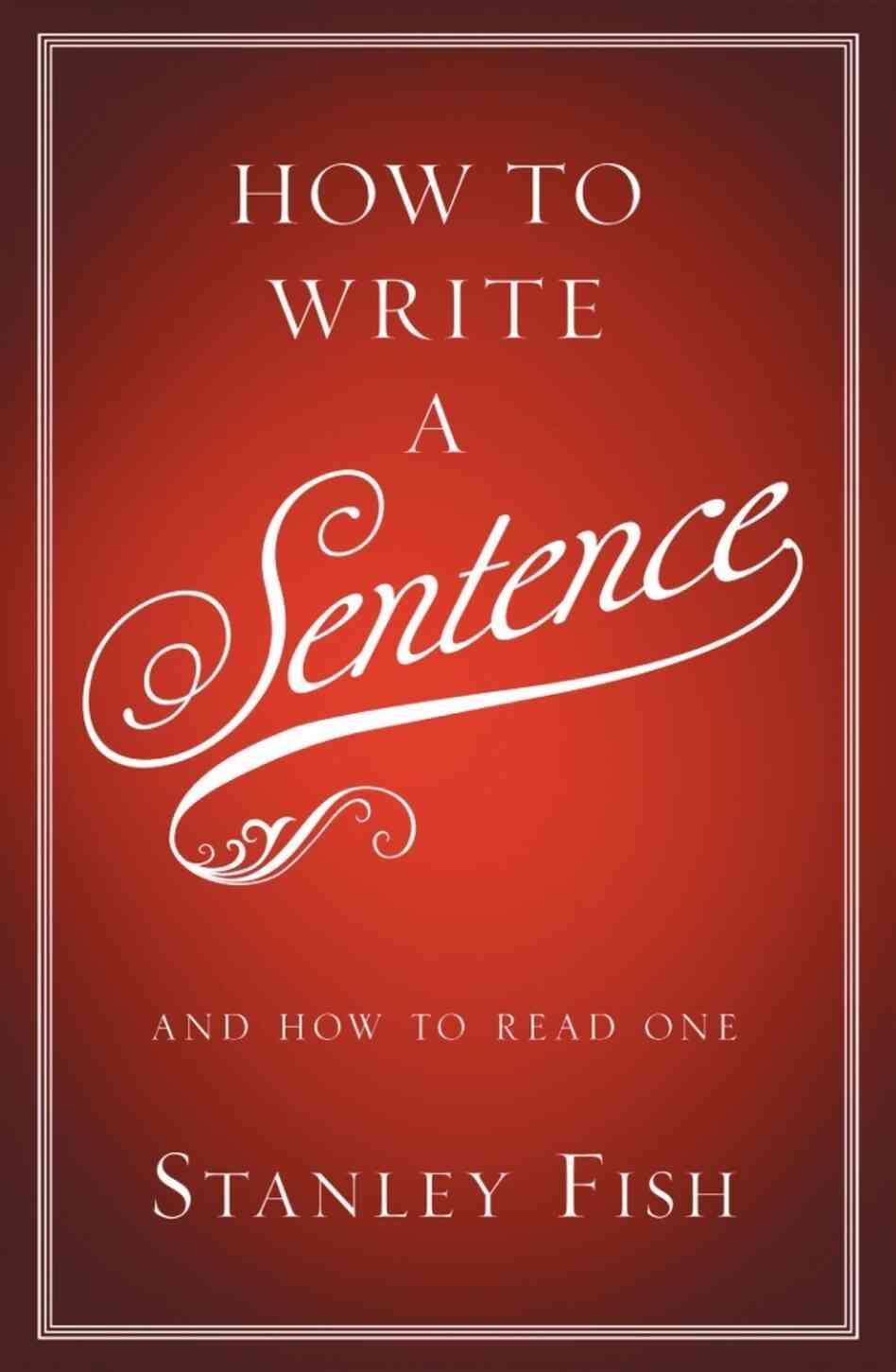How to Read to Read a Sentence and How to Write One, by Stanley Fish

The sentence is the coin of the realm, the catch that holds a reader fast to a story. And I love that Stanley Fish wrote a book just about sentences. A professor of law and dean emeritus at the College of Liberal Arts and Sciences at the University of Illinois, Fish looks at both structure and content in a way that is intellectually rigorous and personal—and he is clearly a fan of the well-crafted sentence.
Here, for example is his description of how sentences move a reader:
“…words so precisely placed that in combination with other words, also precisely placed, they carve out a shape in space and time.”
Fish is a keen advocate of literature, and once he defines his view of what sentences are, what they do, and how they do it, he moves into examples. He also looks closely at language construction. Just as carpenters love the smell of timber and the sound of a hammer on the head of nail, writers (those for whom language is part of the job—and the pleasure of writing) are prone to a fascination with the nuts and bolts of a sentence. Fish examines structure, syntax, grammar and usage, all in his clear, easy style. Words can be lumbering, maddeningly opaque things, a point Fish affirms: “Before the words slide into their slots, they are just discrete items, pointing everywhere and nowhere.”
I wholeheartedly agree with his advice for writers to “make language so transparent a medium that it disappears and interposes no obstacle or screen between the reader and the thing it points to.” Though it’s one thing to intend and another to achieve. I learned a lot from this book, and felt well-advised by Fish. As a curator of sentences, he has excellent taste. Here, he cites a line from Anthony Burgess’s novel Enderby Outside (1968):
And the words slide into the slots ordained by syntax, and glitter as with atmospheric dust with those impurities which we call meaning.
As sentences go, I’d say that one definitely grabs.
—Lauren Alwan
